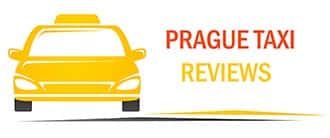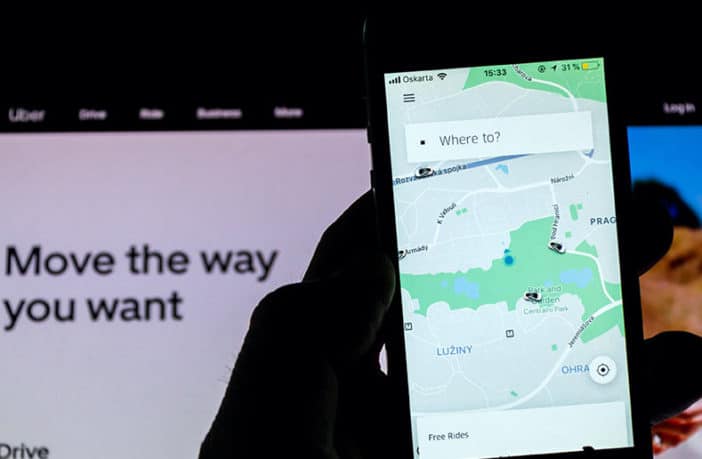The threat of hundreds of thousands of fines is to be ended by the amendment, but it will take months
He started driving for Uber eleven months ago. Since then, people have ordered him more than five thousand times using a mobile app. He drives 10,000 kilometers each month in Prague. He drives mainly in the dark – time spent behind the wheel quickly taught him that it is safer. The night street is dominated mainly by the taxi drivers and alternative drivers; those who can drive properly.
“Daily riders” are, on the other hand, less predictable, and the probability of accident grows. Every scratch on a borrowed car means extra expenses which cannot be afforded. The inspectors from the municipality are his threat.
Despite having a yellow taxi driver card, a valid concession, and a rental car, he violates the law. “I’m doing everything I can to meet as many duties as possible, but I cannot meet all of the rules.” I am always violating the law,” said the HN Uber driver, who did not want to share his name.
The Czech legislation does not account for mobile applications which services like Uber or competitive Taxify stand upon. “Being an Uber or Taxify driver” therefore automatically means being outside of the law. The situation should change the amendment to the Road Act. “The amendment should legalize the use of applications as another type of taxi service, which will be discussed by the government during February, and we expect it to become effective in the second half of this year,” said spokeswoman of the Ministry of Transport, Lenka Rezková.
Uber friendly to EET
The ministry started to work on the amendment a year ago. At that time, the situation in Prague was at its most extreme: Traditional cabs have blocked the streets of the capital several times, demanding the authority to handle alternative taxi drivers.
Their repeated demonstrations eventually led to the fact that the problem really began to be addressed by the government. Last year, in April, Uber signed a memorandum, according to which it began to share with the authorities information on how many drives its drivers have made and how much they have earnt. Uber has further promised to provide the appropriate trade license for the operation of passenger transport. However, it was still not fulfilled. Since October, as part of the agreement, it has voluntarily tested the introduction of the EET for its drivers.
The details of the Uber Memorandum do not comment on that very much. And the specific questions that HN have sent the company in the past three months are still the same.
“We have changed the way we do business throughout the world, including Prague; we would like to become a partner of the city and strengthen our cooperation with taxi services.” For example, we are working on increasing financial transparency with Czech authorities, and we only accept drivers with valid taxi licenses.”
“Doing this the right way” is also a strategy of competitor Taxify, till the approval of the law is effective. “From January of this year, all those who are interested in becoming a taxi driver will have to register a taxi driver’s license for the approval of the registration in our systems, except for the ID card, driver’s license, vehicle ID and vehicle insurance documents. Their car must be registered in a taxi vehicle registration and they have to upload a licensed trade on-road motor transport for transporting up to nine people,” calculates Roman Sysel, Taxify Head for the Czech Republic and Slovakia.
To what extent the company really has these requirements for drivers can hardly be verified.
Drivers driving for Uber or Taxify are still in a legal vacuum. And when the controllers from the Prague “taxi team” come into their car, the drivers are basically at their mercy. “There is a minimum of cases where everything is as should be,” says Prague spokesman Vít Hofman. However, the city does not record whether the offense is more perpetrated by drivers of alternative or traditional taxis. It is clear from the most frequent breach of rules that the problem is mainly on the part of drivers of alternative taxis. “Most often there is a situation where the vehicle is not equipped with a taximeter, it is not marked as a taxi vehicle or does not have a visibly priced price list,” adds Hofman.
A taxi cannot be an unmarked car
It is these moments the pending amendment to the Road Transport Act should solve. According to it, the taximeter will not be required in some cases. Drivers are equipped with an application whereby the passenger confirms that they agree to a pre-determined price prior to the commencement of the journey.
“The ‘taxi light’ will be the privilege of only those who will want to transport the passengers outside the application, on the street,” says the spokesman of the Ministry of Transport, Rezková.
Other drivers will have to have a sticker stuck to the car to make it clear at first glance that they are acting as taxi drivers. But alternative taxis have a problem with this.
“If you want to call a driver who drives with an application now, you order him and he will come in. But the problem is that once the cars are labeled, it is possible that somebody would wave on such a driver and he would come; then it’s very likely that there will be unfairness that the platform will not be able to prevent – you will be marked as a Taxify car but will cheat – and we will not be able to do anything about it because we will not know about it,” fears Sysel.
However, the identification car sticker is not the biggest problem for alternative taxi drivers. Lobbying will be primarily against the so-called “mediator’s responsibility”. According to the amendment, mobile platforms and classical dispatchers will have to be responsible for the journey to take place in the authorized car, and the holder of the “yellow card”, the driver’s taxi card, is sitting behind the wheel. With this change, on the other hand, there is no problem with the competitor Liftago, which is based on the fact that it complies with the current laws in all respects: it runs with licensed drivers whose kilometers are measured by taximeters. “The law is obsolete, with the assumption that its liberalization will be the responsibility of the platforms, without which these platforms will still do what they want,” says Liftago chief, Ondřej Krátký. According to him, some alternative taxis are afraid of liability just because their drivers are violating rules at large.
Another area of the amendment, which many consider problematic, is the abolition of the power of the municipalities to require the taxi drivers to know the topography and legislation. “It’s a measure from the previous millennium; people just learn to pass the test, and they now can within three days,” says Sysel from Taxify. According to Kratky, however, the city will not only lose control over what taxi drivers drive on their streets, but will also lose the tool that can be used to regulate them. The Liftago chief argues with last year’s study suggesting that alternative taxis have worsened traffic status in some cities in the United States.
Drivers travel thousands of kilometers across the city, often only in their own cars, commuting to customers, causing overcrowding of traffic.
Krátky also points out that knowledge of Czech is also proven by the completion of the necessary examinations. In London, for example, all taxi drivers have to show by the end of April that they can speak English at least at B1 level, or intermediate level. According to the regulator, which is a city itself, it is important for the driver to negotiate with the passenger on the destination and also to be able to recognize important traffic announcements on road signs.
Courts are often powerless to deal with alternative taxis
Fighting illegal taxi drivers successfully is still complicated by the fact that courts often fail to punish them.
Drivers who do not meet the conditions of a regular taxi driver are subject to a fine of tens to hundreds of thousands of crowns, depending on the type of offense. Yet they are willing to take the risk.
For example, people traveling using Uber rely on the fact that the American company pays the fine for them. In addition to its services, its lawyers are fighting the city council, who are able to drop the fines on a formality. Exactly a year ago, a former Mayor of Prague Adriana Krnáčová has complained about the issue. She has described how the city handed out 130 fines within three months, but in reality, only six of them were fined.
Both Uber and Taxify have faced several pre-trial courts in the Czech Republic, which has forbidden them in certain localities, to use non-profits for their services. For example, Uber was forbidden in Brno. The Supreme Court in Olomouc canceled the interim measure, but a few months later it was resumed. Taxify was banned in several cities in early October, where they have decided to expand from the capital: Ostrava, Olomouc, Pilsen, and České Budějovice. The company ceased to operate in these cities in December. The lawsuit in the capital is also underway; Taxify has now appealed against the last ban on the activity.
Unlike Uber, Taxify does not accept court arguments. It claims to only be a software vendor, and it does not answer as to whether its drivers respect the law. However, at the end of 2017, the European Court of Justice ruled that a company that uses mobile applications to connect passengers with non-professional drivers is a transportation service. In its ruling, however, it only refers to Uber. According to Mark Hejduk of Urban & Hejduk lawyers, who has been representing traditional taxi drivers on both sides of the Czech courts, the American company is more receptive to the domestic authorities and has joined the memorandum.



